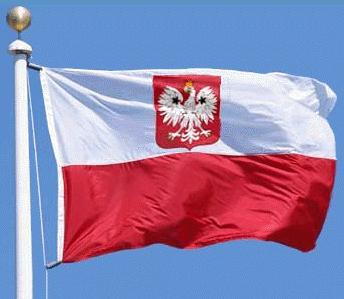Old textile centre Lodz now weaves a cultural future
 Lodz, Poland - The city is no beauty and cannot compare with Gdansk or Krakow. Much of it remains grey. But things have clearly changed in recent years. Piotrkowska Street, the main boulevard, is now lively. Restaurants and pubs have sprung up. Old factory buildings have been converted into lofts, galleries and museums.
Lodz, Poland - The city is no beauty and cannot compare with Gdansk or Krakow. Much of it remains grey. But things have clearly changed in recent years. Piotrkowska Street, the main boulevard, is now lively. Restaurants and pubs have sprung up. Old factory buildings have been converted into lofts, galleries and museums.
And Lodz is even aspiring to become a European "capital of culture" in 2016.
Pronounced "woodge," Lodz was long Poland's second-largest city. Its textile industry declined steadily during the 1980s, however, and then collapsed. The massive job loss sparked an exodus of some 200,000 inhabitants, and today Lodz is Poland's third-largest city after Warsaw and Krakow.
But as in Manchester, England, a city that Lodz is often compared with, new life has sprung up in the old factories of defunct, 19th-century industries. They have become tourist attractions, as have the palaces that the industrialists lived in.
One of the most important industrialists in Lodz was German-born Karl Wilhelm Scheibler, who came to own a seventh of the land in the city and employed about 7,500 workers. His old textile mill, in the district of Ksiezy Mlyn, still seems enormous. The mill even had its own school, chemist's shop and hospital.
"Scheibler married well," notes guide Anna Jozwiak during a tour of the grounds. "His wife, Anna Werner, had a substantial dowry." It is said that when the "Polish cotton king" died in 1881, his fortune amounted to 12 million rubles (Lodz was under the Russian Empire's rule at the time). By comparison, a textile worker earned five rubles a week.
"The industrialists lived in palaces," Jozwiak says. "They built them in neo-Renaissance style or neo-Gothic - the main thing was that they be neo-something." This was also true of the palace that Scheibler gave his eldest daughter, Mathilda, on her wedding. Today it is open to the public.
In Polish the palace is called Palac Herbsta, after Eduard Herbst, Mathilda's husband. Among its features are a high-ceilinged ballroom, a grand piano, and a dining table with eight chairs - almost as if the Herbsts were still expecting evening guests.
Scheibler's arch rival was textile magnate Izrael Poznanski, who had the biggest palace of all the industrialists in Lodz. It took 20 years to build. When Poznanski was asked which architectural style he wanted, he is said to have replied, "I can afford all styles."
The exterior is neo-Baroque. Inside, there is a high-ceilinged ballroom with mirrors that stretch nearly from floor to ceiling. Part of the Poznanski Palace now houses the Lodz history museum, which also chronicles the life of another famous son of the city: pianist Artur Rubinstein.
Just around the corner from Poznanski Palace is Manufaktura, a mall set amid Poznanski's old factory buildings. Here families lounge on benches and enjoy the fountains. A few steps away, patrons of a cafe have made themselves comfortable under sunshades.
Visitors can be taken aback by so much Italian flair, wondering, "Is this really Poland?" Manufaktura's charms also include a shopping centre, an IMAX 3D cinema, two museums and a beach volleyball court.
Poznanski's rise from poverty to fabulous wealth has a fairy-tale quality. He began to build his textile mill in 1872. It would eventually employ about 7,000 workers, and had a spinning plant, dye factory and printing works.
The Factory Museum in Manufaktura does not fail to tell how Poznanski amassed his wealth at the expense of his workers' health. Some 200 clattering looms in the spinning plant made a hellish din. To give tourists an idea of what it was like, a loom in the museum is switched on for a few minutes. Then it is nearly impossible to understand what someone is saying.
Deafness was almost certain for those who worked several years at a loom. Shifts lasted 16 hours, and child labour was customary.
But Lodz has a completely different side, too. Cinema buffs know it as Poland's film capital, nicknamed "Hollylodz." The state-run Polish National Film, Television and Theatre School in Lodz, founded in 1948, is the oldest institution of its kind in Europe. One of the alumni is director Roman Polanski.
But career prospects for the school's 350 students are less than rosy considering competition from the United States and India, the world's cinematic superpowers.
"Today we can say whatever we want but have to look for financing," the school's vice-rector, Andrzej Bednarek, says of Polish filmmaking in the post-Communist era. "Before, we had to be careful about what we said, but censorship promoted creativity."
For his part, Michal Piernikowski, of the Lodz Art Center, is looking ahead expectantly. The European Union selects European "capitals of culture" annually, and in 2016 two cities - one Polish, the other Spanish - will be given the title. Lodz is a candidate.
Although the Polish cities of Warsaw, Gdansk, Poznan, Szczecin, Lublin and Torun are also candidates, Piernikowski says he thinks that Lodz will get the nod.
"We're already one of Poland's most important cultural cities," he points out. "We've got the International Festival of Photography - the biggest event of its kind in Poland - along with Fashion Week and the biggest collection of contemporary art. With us, avant-garde is a tradition." (dpa)